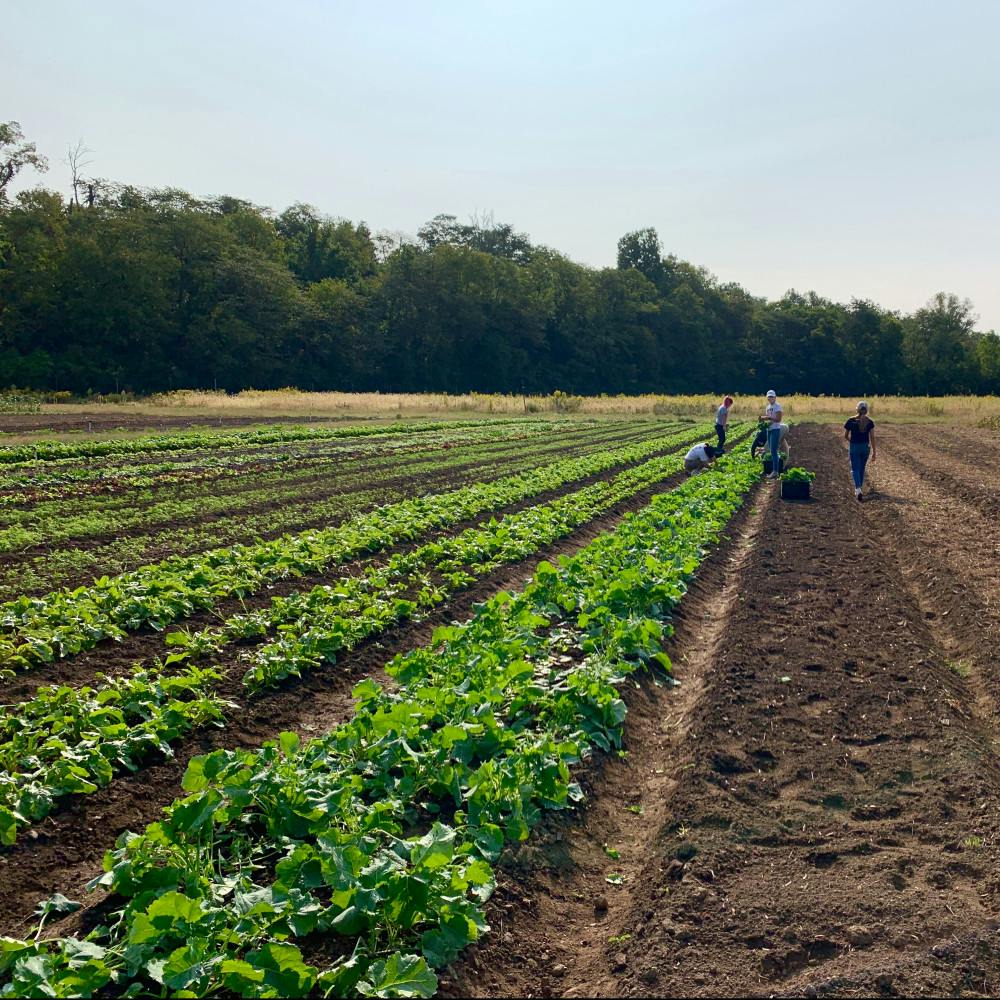By: Gia Mariani
I’ve spent this fall semester doing volunteer work with Miami’s Institute for Food for my service project as part of the WST 341 class, Synthesis into Action. Every Thursday from 9:30 a.m. to 11:30 a.m. I went to Miami’s CSA Farm where I picked, sorted, washed, or bagged produce. The main produce harvested while I was there ranged from tomatoes, to greens, to squash, to beets, but it varies by season.
The farm itself sits on 14 acres, though only five acres are being actively used. The food harvested there is given out to people in the community who either participate in the workshare program or pay for a subscription. Since my class fell into neither of those categories, we were allowed to take home some of the excess produce each week.

So what exactly is the CSA Farm? CSA stands for Community Supported Agriculture. The farm is self-supporting and is a direct producer to the consumer pipeline. On Thursday afternoons, those who have paid for a food share subscription go to Cook Field to pick up a bundle of fresh veggies for the week. Food share subscriptions come in single, double, or deluxe sizes. There are several different subscription periods for fall and summer seasons.
I asked fellow GreenHawks member and workshare volunteer Elizabeth Weber to explain some more of the workshare process to me. She found out about the program through an Instagram post by Miami’s EcoReps. She told me that workshare volunteers work three hours at the CSA Farm each week in exchange for a single CSA share.
“Personally, I go to the farm on Tuesday and Thursday mornings and volunteer for one and a half hours. Over the course of the semester, I have volunteered for over 25 hours and have learned so much about the farm process,” Weber told me. “One of the most interesting things I have been able to see is how the different growing seasons passed. In August, a lot of the time was spent collecting the different varieties of beans or collecting and washing tomatoes. Now, as the weather gets colder, some cold-tolerant veggies have been planted; however, the farm is missing some of its late summer staples.”

Enjoy what you're reading?
Signup for our newsletter
As a college student, it can be hard to find healthy and sustainable food options when your funds and time are limited. The CSA Farm gives subscribers a chance to try new foods and dishes that they maybe wouldn’t have thought to try before. I personally tend to shy away from squash at the store, but I’ve made spaghetti-squash breadsticks from squash that I harvested at the farm.
“These vegetables have allowed me to experiment and try new dishes I would have never tried! There are so many different vegetables and it has been a great experience being able to see the impact of possibly eating the vegetables I collected!” Weber expressed.

Throughout the time of the pandemic, the farm has also provided a safe environment to socialize, as it is easy to socially distance when harvesting. I know that for me personally, being outside each week as part of my class helped me feel less stressed and ready for the rest of my classes. I thoroughly enjoyed every aspect of working at the CSA Farm, from sitting in the first harvesting kale to playing with Tanga, the dog of one of the main employees. I hope to continue to be involved with the Farm in the future and encourage others to consider being part of the program.
All photos courtesy of Gia Mariani




